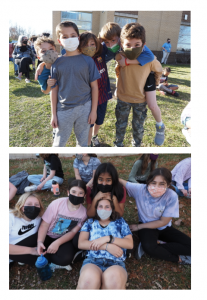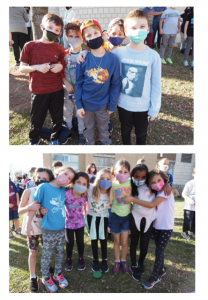It has always been our practice to keep up with the latest neuroscientific research on learning. How does the brain learn best? What strategies help students succeed academically? How can we as teachers provide an environment that maximizes learning capacity?
 I was fortunate to attend a conference on “Learning and the Brain” in November. For three riveting days, we learned about “calming anxious brains,” and I soaked in the research of leading neuroscientists who presented on ways their findings should impact schools.
I was fortunate to attend a conference on “Learning and the Brain” in November. For three riveting days, we learned about “calming anxious brains,” and I soaked in the research of leading neuroscientists who presented on ways their findings should impact schools.
The overwhelming focus was on the impact of trauma, fear and anxiety on the brain. The increased presence of all three during the pandemic impacts much of what we do at school. There are specific strategies that scientists know help our brains to move from “fight or flight” to a place where we can learn, think, plan and behave rationally. Being intentional about making them part of your child’s school day is our goal. Here are a few:
- Exercise: moving our bodies is like a bubble bath of happy chemicals for our brain
- Mindfulness: the simple act of self-awareness and metacognition helps us make choices that are healthy and productive
- Gratitude: thankfulness leads to happiness
- Empathy: interpersonal interaction leads to being curious, not furious
- Awe: reducing our multitasking and allowing our brains to take in our surroundings and reduce stress
- Community, sense of belonging: feeling part of a community and with sense of purpose reduces anxiety

While these have always been a part of the Mirowitz experience, you can feel certain that your students will experience more of them as we move into the winter months. When we know something to be good for children, Mirowitz educators implement it without delay.
I’ll be reading the book The Body Keeps the Score by one of the phenomenal presenters from the conference. Would anyone like to join me to discuss the first few chapters and possibly more? Let me know!
Happy Chanukah and Shabbat Shalom,
Cheryl
